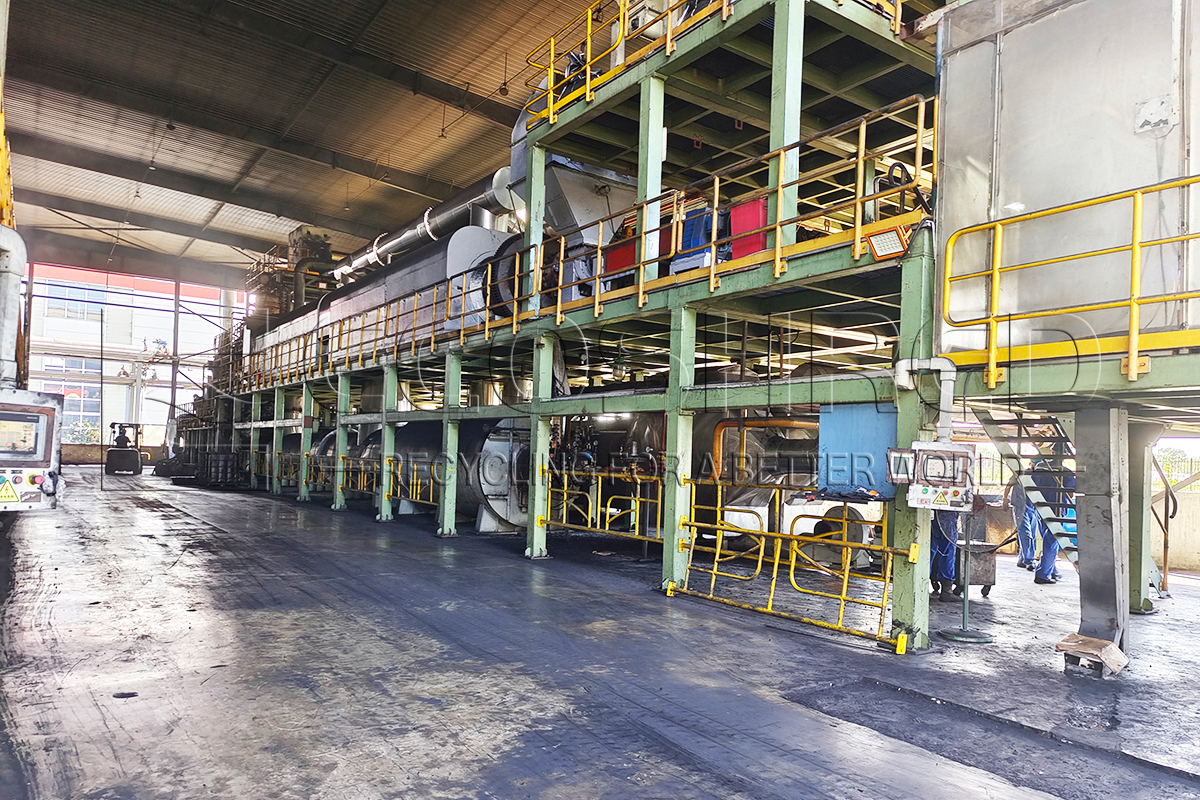When considering the adoption of tire pyrolysis technology, selecting the right tire pyrolysis plant is crucial for achieving efficient and sustainable operations. This comprehensive guide aims to provide insights into the key factors to consider when choosing a tire pyrolysis plant. From understanding the technology and evaluating production capacity to assessing environmental impact and compliance, this article will help stakeholders navigate the decision-making process effectively. By examining operational costs, selecting reliable manufacturers, reviewing maintenance procedures, and ensuring safety measures, organizations can make informed decisions to maximize the benefits of tire pyrolysis while meeting regulatory requirements.
-
- Understanding Tire Pyrolysis Technology
Key Principles of Tire Pyrolysis
Tire pyrolysis works its magic by heating old tires in the absence of oxygen, breaking them down into valuable byproducts like oil, gas, and carbon black. It’s like turning trash into treasure!
Types of Tire Pyrolysis Plants
From batch and semi-continuous to fully continuous systems, there are different types of tire pyrolysis plants to choose from. Think of it as picking the perfect plant pal that suits your needs.
-
- Evaluating Production Capacity and Efficiency
Factors Influencing Production Capacity
Production capacity depends on factors like the size of the plant and the processing time. It’s all about finding that sweet spot between quantity and quality.
Efficiency Metrics to Consider
Keep an eye on efficiency metrics like energy consumption and output quality. After all, you want your tire pyrolysis plant to work smarter, not harder!
-
- Assessing Environmental Impact and Compliance
Environmental Benefits of Tire Pyrolysis
Tire pyrolysis isn’t just about making money – it also helps the environment by reducing waste and creating valuable products. Mother Nature approves!
Regulatory Compliance and Emission Standards
Make sure your plant meets environmental regulations and emission standards. It’s like giving your tire pyrolysis buddy a green thumbs up!
-
- Considering Operational Costs and Return on Investment
Initial Investment and Operating Expenses
Running a tire pyrolysis plant comes with upfront costs and ongoing expenses. It’s all about balancing the books while keeping your eyes on the prize.
Calculating ROI for Tire Pyrolysis Plants
Crunch those numbers to figure out your return on investment. The goal? Turning your tire pyrolysis dreams into a profitable reality.
-
- Selecting a Reliable Manufacturer and Supplier
Researching Manufacturer Reputation
When choosing a tire pyrolysis plant, it’s crucial to dig into the manufacturer’s reputation like you’re searching for your ex’s new flame on social media. Look for reviews, testimonials, and ask for references like you’re asking for the last slice of pizza. Make sure the manufacturer’s track record is as solid as your favorite playlist.
Key Considerations for Choosing a Supplier
Selecting a tyre pyrolysis machine manufacturer is like finding a reliable workout buddy – you want someone who’s there for the long haul. Consider factors like delivery times, customer service responsiveness, and product quality. Don’t settle for a supplier that’s flakier than a croissant; choose one that’s as dependable as your morning coffee.
-
- Reviewing Maintenance and Support Services
Maintenance Requirements for Tire Pyrolysis Plants
Just like maintaining a plant or a pet, tire pyrolysis plants need regular care and attention to keep them running smoothly. Familiarize yourself with the maintenance requirements like you’re studying for a pop quiz. Remember, neglecting maintenance is like ghosting your responsibilities – it won’t end well.
Availability of Technical Support and Training
Ensure the supplier offers top-notch technical support and training like you’re shopping for a personal trainer. Having experts on standby to help troubleshoot issues is as essential as having your best friend on speed dial for life advice. Choose a supplier who’s with you every step of the way, like a loyal sidekick.
-
- Ensuring Safety and Regulatory Compliance
Safety Protocols in Tire Pyrolysis Operations
Safety should be your top priority when operating a tire pyrolysis plant. Implement safety protocols like you’re preparing for a mission impossible stunt. Remember, safety first – because you’re not an action hero, and a cape won’t protect you from hazards.
Compliance with Occupational Health and Safety Guidelines
Ensure your tire pyrolysis plant complies with occupational health and safety guidelines like you’re following a recipe to bake the perfect cake. Don’t cut corners when it comes to safety regulations. Complying with guidelines is non-negotiable, just like adding chocolate chips to your cookies – it’s a must.In conclusion, choosing a tire pyrolysis plant involves a careful analysis of various technical, environmental, financial, and safety considerations. By leveraging the information and insights provided in this guide, businesses can make informed decisions that align with their operational goals and sustainability objectives. Selecting the right tire pyrolysis plant not only enhances efficiency and productivity but also contributes to a cleaner and greener future. Make sure to thoroughly assess all aspects discussed in this article to embark on a successful tire pyrolysis journey.





